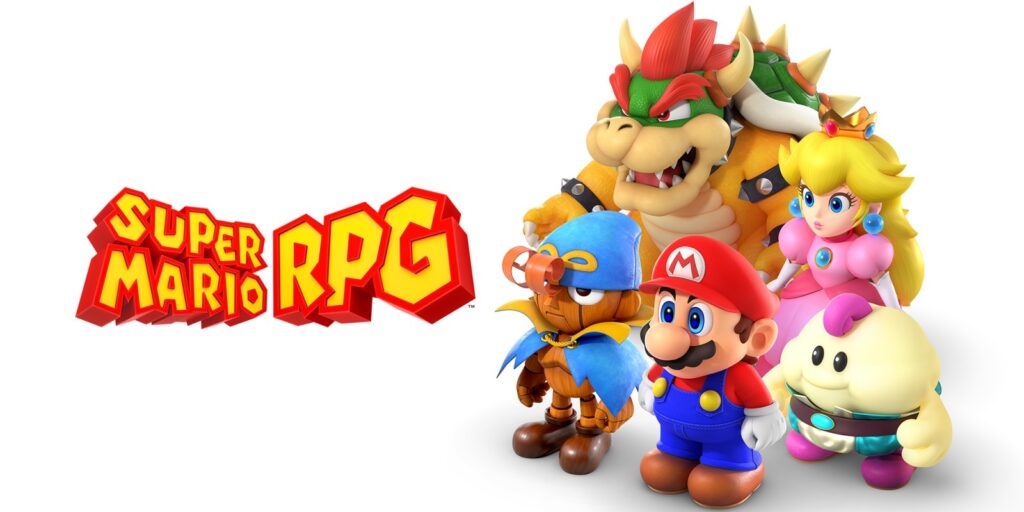Verdict
A well-rounded flagship phone that’s aimed squarely at the mainstream. The Find X5 offers a superb screen, excellent battery life, it takes great photos, and performance is solid, though the chipset is beginning to show its age in 2023. But for the best bang per buck, Samsung remains the brand to beat.
Pros
- Gorgeous display
- Very capable cameras
- Premium design and build
Cons
- Zoom lens is limited
- No IP water resistance
- Strong competition at this price
Availability
- UKRRP: £749
- USAunavailable
- EuropeRRP: €999
- Canadaunavailable
- AustraliaRRP: AU$799
Key Features
- Snapdragon 888 processorLast year’s flagship-tier CPU is still very powerful today, if a step behind rivals in terms of raw performance
- Triple-lens cameraVersatile setup includes a high-pixel-count main camera, along with dedicated zoom and ultra-wide lenses
- Rapid chargingA full charge takes just over 40 minutes thanks to 80W wired charging – and 30W wireless charging is fairly quick, too
Introduction
A two-tier approach to flagship phones is nothing new. It’s always the Plus, Pro or Ultra variants that command the lion’s share of the attention, but the more mainstream alternatives are becoming more difficult to ignore – and the Oppo Find X5 is a perfect example why.
While the pricier Find X5 Pro promises a few extra features, the vanilla version delivers a very similar experience, in a more sensible form factor and with a less wince-inducing price. Very little is lost by using a previous-generation processor, and while rapid charging is slightly slower, it has the same killer design and takes fantastic photos in all lighting conditions based on my experience with the phone.
I’m not convinced it’s as complete a package as a Samsung Galaxy S22 or the newer Galaxy S23 in 2023 – but it gets surprisingly close, and delivers consistently better battery life. Where previously Oppo was an outside choice, the Find X5 is very much in the running as one best phones you’ll find at this price.
It’s worth noting that Oppo has since released the upgraded Find X6, but it’s a China-only release with no plans for an international rollout, so the Find X5 remains one of the top-end Oppo smartphones in 2023.
Design and Screen
- Premium materials and unique camera “bulge”
- Gorgeous, high refresh rate AMOLED display
I’ve described phones as “pebble-like” before, but I don’t think any of them ever came as close as the Find X5 does. There’s a near-complete absence of right angles, with the rear camera module “bulging” out of the frosted matte glass. It feels satisfyingly smooth to the touch, and is far better at disguising fingerprints than the glossy, reflective finishes seen on many rivals.
I know that not everyone likes a curved-edge display, since the rounded parts can sometimes be a distraction when they catch the light; but the shallow curve here really minimises that effect.
Both sides of the phone curve towards the metal frame, so it sits comfortably in your palm, and the 6.5-inch display is perfectly manageable with one hand. The under-display fingerprint sensor is placed sensibly far up the screen, so I never needed to awkwardly stretch my thumb just to unlock the phone.
It does make a few concessions to the pricier Find X5 Pro, most notably a lack of IP rating for water resistance. Neither handset has a microSD card slot, but given the vanilla Find X5’s sole on-board storage option is 256GB, that should be plenty of capacity for most people.
Unlike its bigger brother, the Find X5 doesn’t have an LTPO display. Although the 120Hz maximum refresh rate delivers buttery-smooth scrolling, with no adaptive refresh option you have to force it on at the expense of battery life.
However, in all other respects, it’s an excellent panel. The 2400 x 1080 resolution is sharp enough without demanding too much from the chipset when playing games, it supports HDR10+ video playback, and delivers the kind of vibrant, punchy colours I expect from an AMOLED screen. The default Vivid colour mode is a little too cool, with oversaturated reds and greens, but the Natural mode is impressively accurate – if you don’t mind a slightly more muted appearance.
I wasn’t able to measure the screen brightness, which Oppo claims can hit a peak 1000 nits, but had no complaints with outdoor visibility using the phone while out and about. It seems to be on par with flagships including the Google Pixel 6 Pro and Xiaomi 12, but not quite as bright as the Samsung Galaxy S22 Plus on Max Auto. Still, overall image quality is comfortably up there with the best of today’s flagship phones.
Cameras
- Excellent main and ultra-wide results in all conditions
- 2x optical zoom more limited than rivals
With prominent Hasselblad branding and a dedicated MariSilicon image processor, I was expecting good results from the Find X5’s triple-lens rear camera.
It’s effectively the same setup you’ll find in the more expensive Find X5 Pro, with 50-megapixel main and ultra-wide sensors, plus a 13-megapixel telephoto good for 2 x optical zoom. The only difference is that the Find X5 relies on conventional optical image stabilisation, while the Find X5 Pro gets a more advanced 5-axis stabiliser.
As I’ve found with most modern flagship phones, photos taken in bright outdoor settings are well exposed, colourful, and packed with fine detail. Shadows aren’t always on a par with the best smartphone cameras, and auto-HDR doesn’t always bring out the best of overcast scenes; but otherwise, dynamic range is excellent. While it leans towards a more natural, life-like saturation of which I’m a big fan, the AI image enhancement toggle gives things a bit of extra punch – if that’s the sort of thing you like.
The ultra-wide lens delivers slightly more muted images than the main sensor, but results are otherwise consistent, with the same level of fine detail and well-handled exposures. Correction of lens distortion is excellent, and scenes are sharp across the frame. It also doubles as a macro camera, capturing plenty of light and delivering lots of detail, although the focusing distance is further than you’d find on a dedicated macro lens.
Not surprisingly, the zoom lens isn’t up to the same standard, with a much lower pixel count resulting in less fine detail. You have to start cropping into your photos before this becomes obvious, so 2x images are still perfectly usable, but the Samsung Galaxy S22s 3x zoom lens is the clear winner based on my tests.
There’s a dedicated Night mode, but it kicks in automatically when using the standard camera mode in low light, so it doesn’t matter if you forget to turn it on. Each snap takes a few seconds to capture, but the phone does a fantastic job of eliminating camera shake, delivering clean and crisp images with impressive amounts of detail and realistic exposure. Noise is kept to a minimum across all three lenses.
I felt that Portrait mode did a good job of preserving the sharpness of loose hairs, creating a largely convincing bokeh blur, although the effect is less impressive when you start zooming into your images. Apple retains its edge here.
Lastly, the 32-megapixel selfie camera is able to capture colours convincingly, and results are fairly detailed, but general sharpness could be better. It also defaults to a low-level beauty mode; turning off the image processing helps deliver a slightly crisper image, but I still think it’s a step behind the very best smartphone selfie cameras.
Performance
- Snapdragon 888 delivers smooth performance
- Loses out to newer rivals, but only slightly
One of the biggest differences between the Find X5 and its Pro sibling is the chipset powering them. While the more expensive phones in 2022 get the Snapdragon 8 Gen 1 CPU, the regular Find X5 gets an older Snapdragon 888, paired with 8GB of RAM.
This was still cutting-edge in 2021, so I wasn’t surprised to see it deliver consistently smooth performance in apps and on the Android homescreen. There were no hiccups or stutters while swiping or scrolling, and multitasking was largely painless, too. However, the chipset is beginning to look dated in 2023 among competing flagships like the OnePlus 11 that sport the much more capable Snapdragon 8 Gen 2.
Naturally, the Find X5 fell behind phones powered by Qualcomm’s newer silicon in our synthetic benchmarks, but never by a considerable margin. I was perfectly happy with how responsive everything felt, and never felt short-changed on performance during everyday use. Then again, you can’t ignore the fact there are rival handsets out there with newer silicon for the same money.
Snapdragon 8 Gen 1’s biggest gains are on the gaming front, and it’s here the Find X5 starts to feel a little less like a flagship phone – but only if you’re laser-focused on frame rates. Demanding titles such as Genshin Impact still play smoothly enough at higher detail settings, although you may need to turn down a slider or two for the best performance in newer releases.
Given the screen appears to refuse to run games at 120Hz, you’re not exactly missing out if frame rates aren’t as consistently high, although this might be something Oppo addresses with a software update.
The phone runs Android 12, with Oppo’s ColorOS 12.1 on top. This is a fairly restrained skin, but one with lots of potential for customisation. I like that you can choose between iOS-style multiple homescreens or an app drawer, and on-screen keys or gesture navigation. Many of the more drastic changes – such as the pull-out shortcut sidebar – are switched off by default, so as not to overwhelm anyone moving from a different manufacturer’s take on Android.
Oppo has been fairly restrained on the app front, too. I’m not a fan of pre-installed bloat, but the majority here are apps I’d likely download anyway (Facebook, LinkedIn) – and the ones I wouldn’t (Booking.com, PUBG Mobile) can be easily deleted.
The firm’s commitment to future software updates is fairly good, with three years of Android updates and four years of security updates. This isn’t quite on a par with Samsung, which remains ahead of the curve, but it’s comfortably among the best of the rest.
Battery Life
- Fantastic, all-day battery life
- Rapid wired charging, plus fast wireless charging
It might not earn “mini” flagship status, but the Find X5 is still on the smaller side, so I was pleased to see that Oppo found room for a 4800mAh battery.
That’s more capacity than you’ll find in the larger, more expensive Galaxy S22 Plus, and sticking with last year’s chipset instead of the more power-hungry Snapdragon 8 Gen 1 helped deliver impressive longevity.
The Find X5 could comfortably last an entire day of typical use, which included plenty of web browsing, YouTube, Spotify streaming and social scrolling, and not require a plug in at bedtime. More demanding tasks such as gaming would see that figure drop a fair bit faster, but I was still seeing consistently better battery life than the Google Pixel 6 Pro I was using prior to swapping to the Oppo. It’s a shame the screen doesn’t have an adaptive refresh rate, which would have helped eke out even more time between charges.
Speaking of which, the Find X5 is particularly rapid, whether you use the bundled power brick or opt for wireless charging. The 80W adapter can fully charge the phone in just over 40 minutes, with a 50% charge taking just over 14 minutes based on my tests. This is considerably faster than any current Samsung Galaxy handset, even in 2023, and more than twice as fast as the Google Pixel 6 Pro.
Wireless charging at 30W isn’t quite as fast as Xiaomi’s recent efforts, but it’s still twice the maximum rate of Samsung’s latest. There’s also reverse wireless charging, which is handy for topping up a pair of wireless earphones while on the move.
Latest deals
Should you buy it?
If you want a well-equipped flagship phone that does most things very well, the Find X5 delivers. Battery life and camera quality are big strengths, as is the unique design.
For those unwilling to compromise, the Find X5 lacks a few of the features you’ll find in similarly priced rivals. For waterproofing and a cutting-edge CPU, you’ll need to look elsewhere.
Final Thoughts
There’s an awful lot to like about the Find X5, even by 2023 standards. It takes great photos, delivers genuinely impressive battery life, and it looks every bit the flagship phone. I’d even argue its distinctive camera bump is easier on the eye than any current Galaxy phone. However, it lacks a few premium touches that Samsung is only too happy to provide, and for a very similar price.
If you’re prepared to compromise on small things, such as the lack of waterproofing, limited camera zoom and previous-generation chipset, then this is still a very capable device.
How we test
We test every mobile phone we review thoroughly. We use industry-standard tests to compare features properly and we use the phone as our main device over the review period. We’ll always tell you what we find and we never, ever, accept money to review a product.
Tested as main phone for 6 days
All camera modes tested in a variety of situations
Tested with synthetic benchmarks and real world use
You might like…
FAQs
FAQs
What colours does the Oppo Find X5 come in?
You can choose between black and white versions of the Find X5. Both use a frosted glass rear that hides fingerprint smudges very well.
Is the Oppo Find X5 water- and dust-resistant?
Officially, the Find X5 doesn’t have an IP water- or dust-resistance rating. For peace of mind, you’ll need to step up to the Find X5 Pro, which is IP68-rated.
Is the Oppo Find X5 compatible with fast charging?
Yes, the Find X5 supports Oppo SuperVOOC rapid charging at up to 80W. This can deliver a full charge in under 45 minutes.
Trusted Reviews test data
You can see a summary of the test data we collected reviewing the Oppo Find X5 and how it compares to two of its biggest rivals in the table below.
Geekbench 5 single core
Geekbench 5 multi core
1 hour video playback (Netflix, HDR)
30 minute gaming (intensive)
30 minute gaming (light)
1 hour music streaming (online)
1 hour music streaming (offline)
Time from 0-100% charge
Time from 0-50% charge
3D Mark – Wild Life
3D Mark – Sling Shot Extreme
Oppo Find X5
781
3343
6 %
9 %
6 %
1 %
1 %
44 min
14.17 Min
–
5828
Pixel 6 Pro
1046
2914
7 %
20 %
12 %
5 %
3 %
67 min
35 Min
6615
–
Samsung Galaxy S22
1163
3574
9 %
–
–
6 %
6 %
–
25 Min
7272
–
Full specs
You can see a detailed breakdown of the Oppo Find X5’s specifications and how they compare to two of its biggest rivals below. The biggest omission is the use of a previous-generation CPU, which isn’t as fast for gaming.
UK RRP
USA RRP
EU RRP
CA RRP
AUD RRP
Manufacturer
Screen Size
Storage Capacity
Rear Camera
Front Camera
Video Recording
IP rating
Battery
Wireless charging
Fast Charging
Size (Dimensions)
Weight
ASIN
Operating System
Release Date
Resolution
HDR
Refresh Rate
Ports
Chipset
RAM
Colours
Oppo Find X5
£749
Unavailable
€999
Unavailable
AU$799
Oppo
6.55 inches
128GB
50 MP + 13 MP + 50 MP
32 MP
Yes
No
4800 mAh
Yes
Yes
160 x 73 x 8.7 MM
196 G
–
Android 12, ColorOS 12.1
2022
2400 x 1080
Yes
120 Hz
USB-C
Qualcomm Snapdragon 888
8GB
Black, White
Pixel 6 Pro
£849
$849
–
–
–
6.7 inches
128GB, 256GB
50MP + 12MP + 48MP
50MP
Yes
IP68
5003 mAh
Yes
Yes
3 x 0.4 x 6.5 INCHES
210 G
–
Android
2021
1440 x 3120
Yes
120 Hz
USB Type-C
Google Tensor
12GB
Stormy Black, Cloudy White, Sorta Sunny
Samsung Galaxy S22
£769
$799.99
€859
–
–
Samsung
6.1 inches
128GB
50MP, 12MP, 10MP
10-megapixels
Yes
IP68
3700 mAh
–
–
70.6 x 7.6 x 146 MM
168 G
B09NRRVPZ7
Android 12, OneUI 4.1
2021
1080 x 2340
Yes
120 Hz
USB-C
Exynos 2200
8GB
Phantom Black, White, Pink Gold, Green, Graphite, Sky Blu, Violet, Cream, Bora Purple
Jargon buster
mAh
An abbreviation for milliampere-hour and a way to express the capacity of batteries, especially smaller ones in phones. In most cases the higher the mAh, the longer the battery will last but this isn’t always the case.
OLED and AMOLED
Types of displays that use self-lighting pixels to provide greater contrast and more vibrant colours than a typical LCD display, as well as sharper blacks.
NFC
An abbreviation for ‘near field communication’. This technology allows devices to share information by coming into close proximity with one another – the most popular use of this system is in contactless payments.
IP rating
An abbreviation for ‘Ingress Protection Code’, which lets you know to what extent a device might be waterproof or dustproof.








